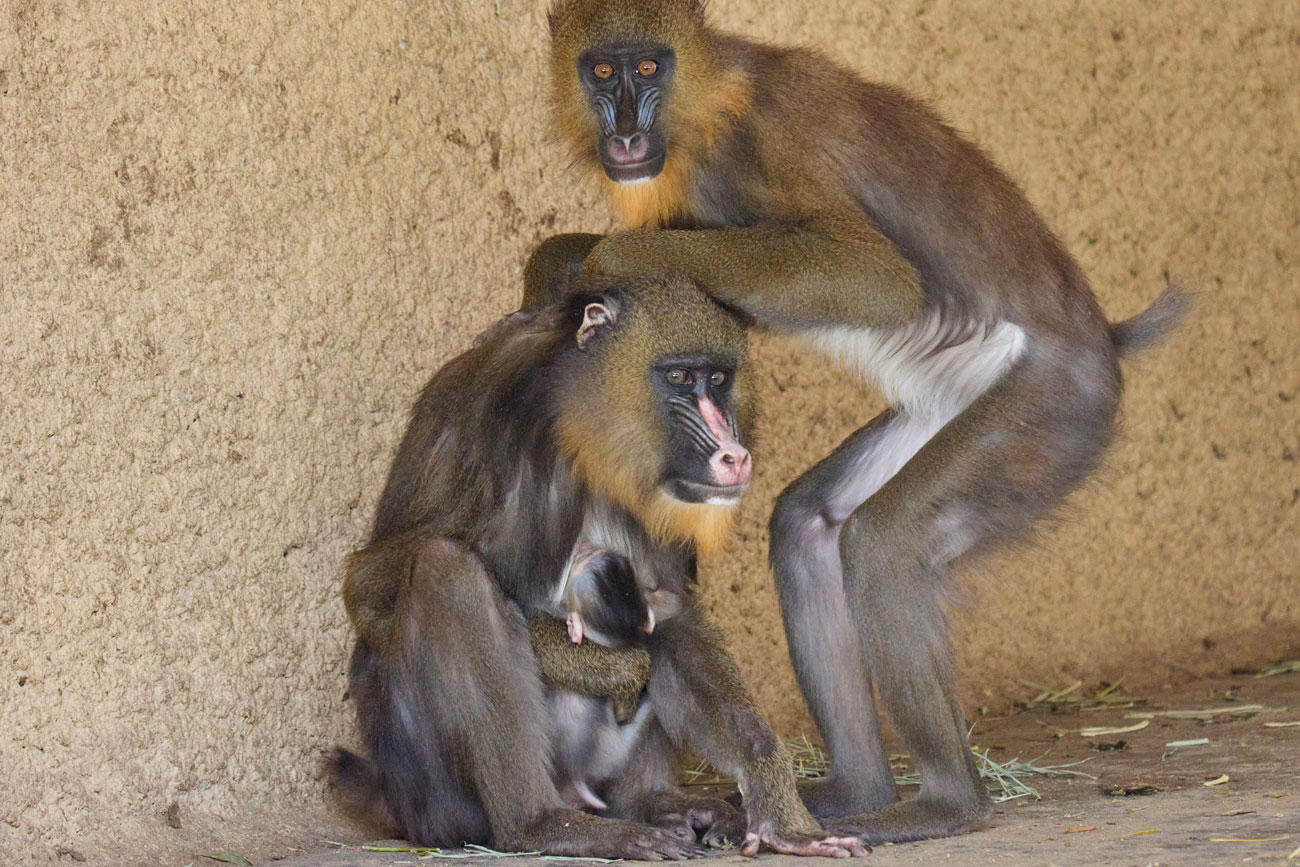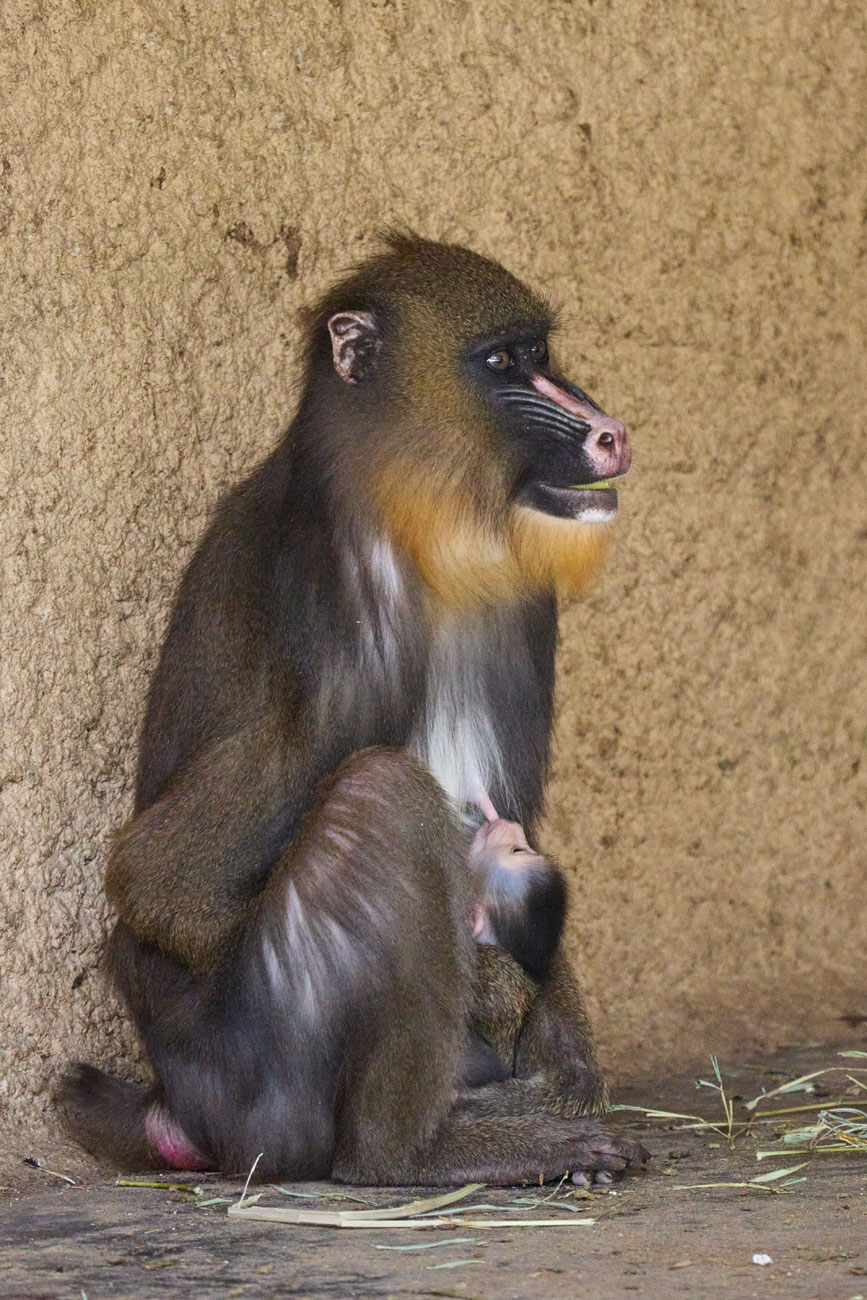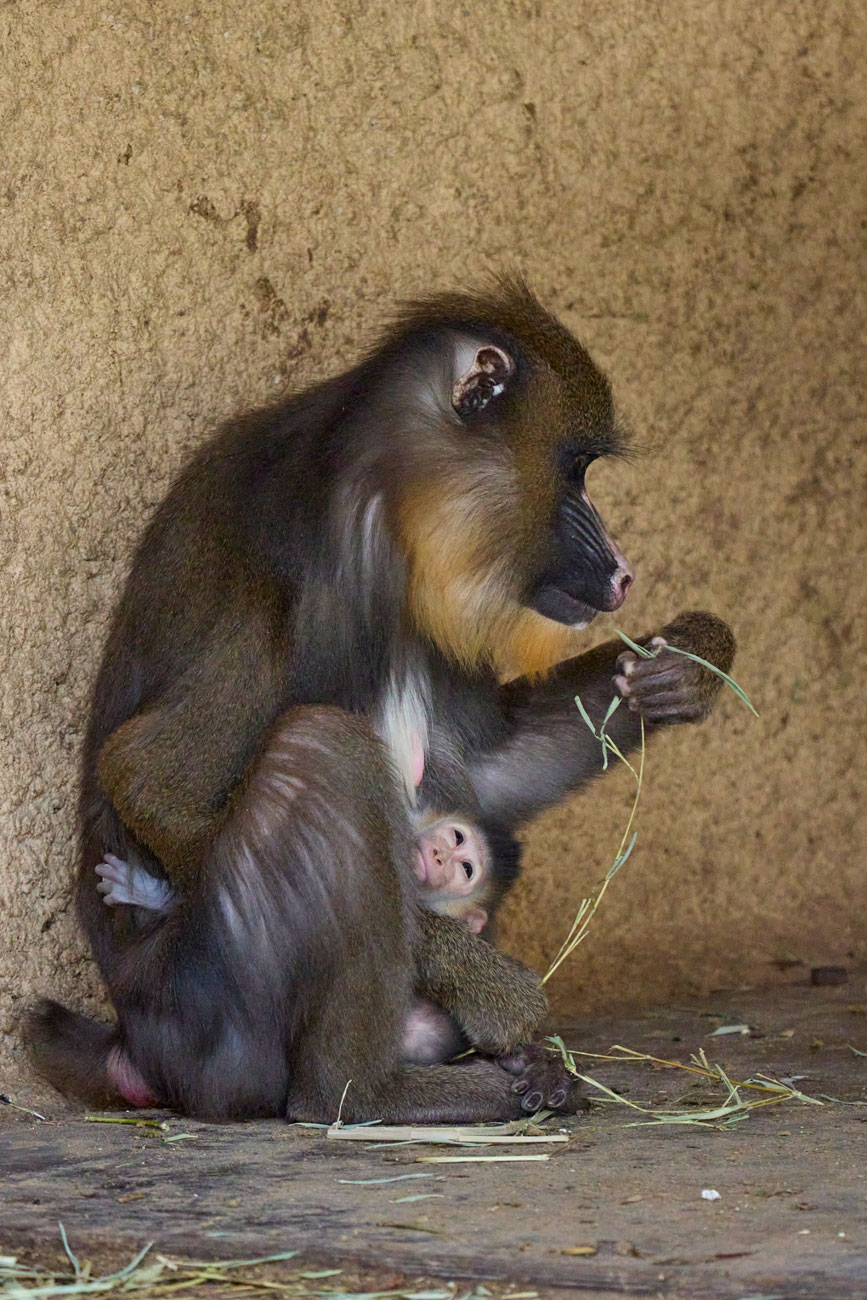Birth of a Mandrill

Here are some pictures of the baby mandrill born only a month ago, bringing the number of individuals in our group to 16!

Living in the tropical forests of central west Africa, the mandrill is, with the drill, the largest living primate apart from the great apes. Males can weigh up to 33 kg and measure 1.10 m in length. They are characterized by an extreme sexual dimorphism with females: almost 3 times larger, they also have impressive upper canines used to threaten their rivals, defend themselves against predators or communicate with group members.
Mandrills show bright colors on snout and rump. When a male has attained the alpha status, he undergoes physical changes: his face and rump become more brightly colored and has a higher testosterone level. With a loss of status, the reverse changes occur: decrease in testosterone level and fading of colors.
The female gives birth to a single young after 6 months of gestation. It stays with its mother until she gives birth to a new young, generally after an interval of about 2 years.


The species, classified as Vulnerable on the IUCN Red List, is threatened by deforestation and mostly poaching for its meat. The use of guns and snares can result in very high losses: more than 20% of the group can be killed in one hunt.